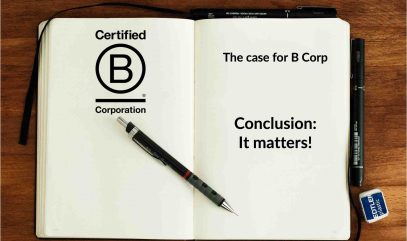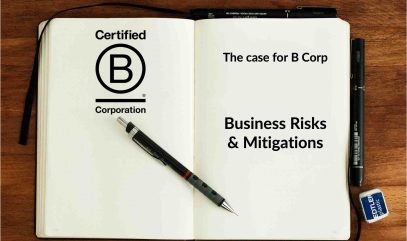Build a Better Business - Community
A third and critical component of building a better business is Community. In the 1950s and 1960s, it was easy to see how businesses were a key part of communities because in most small towns and cities the grocery, bakery, butcher, hardware store, etc., were independently owned and operated by people living in the town. And the owners of these stores may have been your neighbor, they may have been active in community decision-making, and most likely they thought about how their business decisions would impact the people and the environment where they lived and worked.
Today, with the proliferation of national chains and expanding populations, it may seem harder to see how businesses are connected to their communities. But the importance of the connection hasn’t changed – decisions that businesses make still have direct impacts in the communities where they do business. And the health of those same communities has a direct impact on the financial health of businesses and their employees. The relationship between business and community should be mutually symbiotic – anything else and one or both will be left diminished. Communities work best when everyone has the opportunity to prosper.
In terms of building a better business, we can think of Community as how our business engages with people in the places where we do business along with how we think about diversity and inclusion, pay equity, living wages, underemployed populations, supplier relationships, and community service. Engaging with and supporting community is more than simply supporting a youth organization or donating to a community event, it should include deep and careful thinking about how the way we run our business – including all of the various small and large decisions we make each day – impacts everyone around us.
Considering how our businesses impact a larger community can seem overwhelming, yet there are simple actions that can be taken to strengthen our communities and improve the success of our companies:
- emphasize and actively manage diversity in hiring (e.g., women, people of color, LGBTQ, disabled, low-income, and others who experience barriers to employment)
- ensure pay equity and establish improvement plans to close current gaps
- evaluate the ratio of the highest- and lowest-paid workers and actively reduce those gaps to increase the share of profits that employees receive
- create formal community service and community giving policies and targets
- prioritize the use of local suppliers, do business with suppliers who share your values, and hold suppliers accountable for their practices
Perhaps you are thinking this all sounds like a lot of expensive hippy dippy bologna? If so, consider that McKinsey’s 2018 Delivering through Diversity study concluded that “[c]ompanies in the top-quartile for gender diversity on their executive teams were 21% more likely to have above-average profitability than companies in the fourth quartile. For ethnic/cultural diversity, top-quartile companies were 33% more likely to outperform on profitability.” The study also found that companies with diversified boards “are 43% more likely to experience higher profits”. And in his 2018 letter to CEOs, Larry Fink of Blackrock noted: “Boards with a diverse mix of genders, ethnicities, career experiences, and ways of thinking have, as a result, a more diverse and aware mindset. They are less likely to succumb to groupthink or miss new threats to a company’s business model. And they are better able to identify opportunities that promote long-term growth.”
The data clearly shows that diversity and inclusion (and a focus on community) has positive financial benefits. And institutional investors are tuned into that data and prioritizing investment in companies that have figured this out as well. If that isn’t convincing enough, employees are more engaged than ever and are demanding that companies do better. Recently, Amazon employees walked out of work to bring attention to working conditions and in support of climate change. Employees at Riot games staged a walkout in protest of a toxic work culture, at Wayfair to protest supplier relationships, and at Google for the handling of sexual harassment. We are far past the tipping point on this one and ignoring it is at your own peril.
Improving focus on Community might mean that policies, procedures, and practices need to be developed or updated, clearly articulated, and broadly communicated. The associated mindsets also need to become ingrained in company culture with clear lines of accountability (which is where governance comes in). While this may require a lot of effort, the benefits of these steps are a strong business, more engaged employees, and a vibrant community.
Overwhelmed? No worries, we’ve got this! For the Good.
Read More
B Corps Take Climate Justice Seriously
When B Lab launched the Climate Justice Playbook for business, the B Corp community was excited. Companies understood the principles, and wanted more examples of companies implementing climate justice initiatives. The id
Case for B Corp: A Primer (Part 1)
There is strong consumer demand for products produced by companies they deem to be responsible and focused on social and environmental sustainability. In many cases, consumers will pay more for those products. Employees
Case for B Corp: It matters (Part 10)
We know that the climate is changing – 97 percent of scientists agree. While social problems are not new and have been transparent to many people, Covid-19 and racial justice protests shine a bright light on the challeng
Case for B Corp: Business Risks and Mitigations (Part 9)
Risk exists in every decision we make and every action we take as individuals. There are few things in life that don’t carry some risk. Businesses are no different – they face risks every day. And while becoming a B Corp




